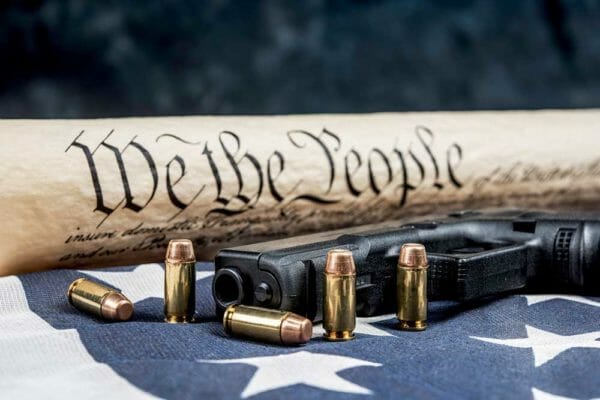
In a recent survey by the Annenberg Constitution Day Civics Survey, Americans were asked to name the rights the First Amendment protected. The Annenberg Foundation has drifted reliably left since its creation. From the ABA Journal:
The 2023 Annenberg Constitution Day Civics Survey asked Americans to name the specific rights guaranteed by the First Amendment. The results:
- 77% said freedom of speech
- 40% said freedom of religion
- 33% said the right to assembly
- 28% said freedom of the press
- 9% said the right to petition government
Twenty-two percent named the right to bear arms, which is actually protected by the Second Amendment.
Indeed, the First Amendment does not specifically mention the right to keep and bear arms. It is also true the First Amendment is key in protecting the right to keep and bear arms.
Without the First Amendment, Americans would not be able to publish books extolling the virtues and necessity of protecting the Second Amendment. Americans would not be able to hold assemblies to exchange information, strategies, contacts, and legislative news about how to effectively restore Second Amendment rights, as in the upcoming Gun Rights Policy Conference to be held in Phoenix, Arizona. Without the First Amendment, Americans would not have the right to argue with those who wish to have them disarmed. Without the First Amendment, advertising for firearms and ammunition could be banned.
California recently passed a law directly limiting free speech regarding firearms, AB 2571. From ca.gov:
This bill would prohibit a firearm industry member, as defined, from advertising or marketing any firearm-related product, as defined, in a manner that is designed, intended, or reasonably appears to be attractive to minors.
The purpose appears to be to prevent children from learning about firearms. The reason is the typical emotional response: guns are bad.
Illinois has passed a statute to outlaw the advertising of firearms designated as a safety threat or that appeal to children. The definition seems a little vague. Simply showing the firearms are tough enough for the military, or are suitable for children seem to be what the lawmakers had in mind. From ourquadcities.com:
“Some of the ads I’ve seen are just stomach-turning,” Don Harmon, of Oak Park, who sponsored the legislation.
The ad for the JR-15, a smaller, lighter .22-caliber rifle, was among them. An emailed statement from the manufacturer, Wee 1 Tactical, said the gun has safety features found on no other gun.
“The JR-15 .22 youth training rifle is for adults who wish to supervise the safe introduction of hunting and shooting sports to the next generation of responsible gun owners,” the statement said. “Parents and guardians wanting to pass on this American tradition have been purchasing small caliber, lighter youth training rifles for decades.”
Mark Oliva of the NSSF characterized the law with these words:
Illinois’ Firearm Industry Responsibility Act criminalizes First Amendment-protected commercial free speech by banning advertising with vague definitions of “intent to appeal to minors.” Gun control politicians in Illinois are attempting to restrict law-abiding citizens from passing on safe firearm handling and shooting skills to the next generation by squelching ability to depict it in advertising. Only adults over the age of 18 can legally purchase a long gun and only adults over 21 can legally purchase a handgun.
The logic of these sorts of laws is simple. Assume guns are bad. Therefore, restrict guns. When you start with false premises, you get bad results. Fortunately, there are a couple of amendments in the Bill of Rights that reinforce one another.
The First Amendment aids in protecting the right to keep and bear arms from politicians. The Second Amendment aids in protecting the First Amendment from politicians and non-government actors.
In countries such as New Zealand, Australia, England, and Canada, the right to keep and bear arms came under attack first. Free speech is currently under attack in all four countries of those countries and in the United States as well.
About Dean Weingarten:
Dean Weingarten has been a peace officer, a military officer, was on the University of Wisconsin Pistol Team for four years, and was first certified to teach firearms safety in 1973. He taught the Arizona concealed carry course for fifteen years until the goal of Constitutional Carry was attained. He has degrees in meteorology and mining engineering, and retired from the Department of Defense after a 30 year career in Army Research, Development, Testing, and Evaluation.

from https://ift.tt/RYNle4J
via IFTTT

No comments:
Post a Comment